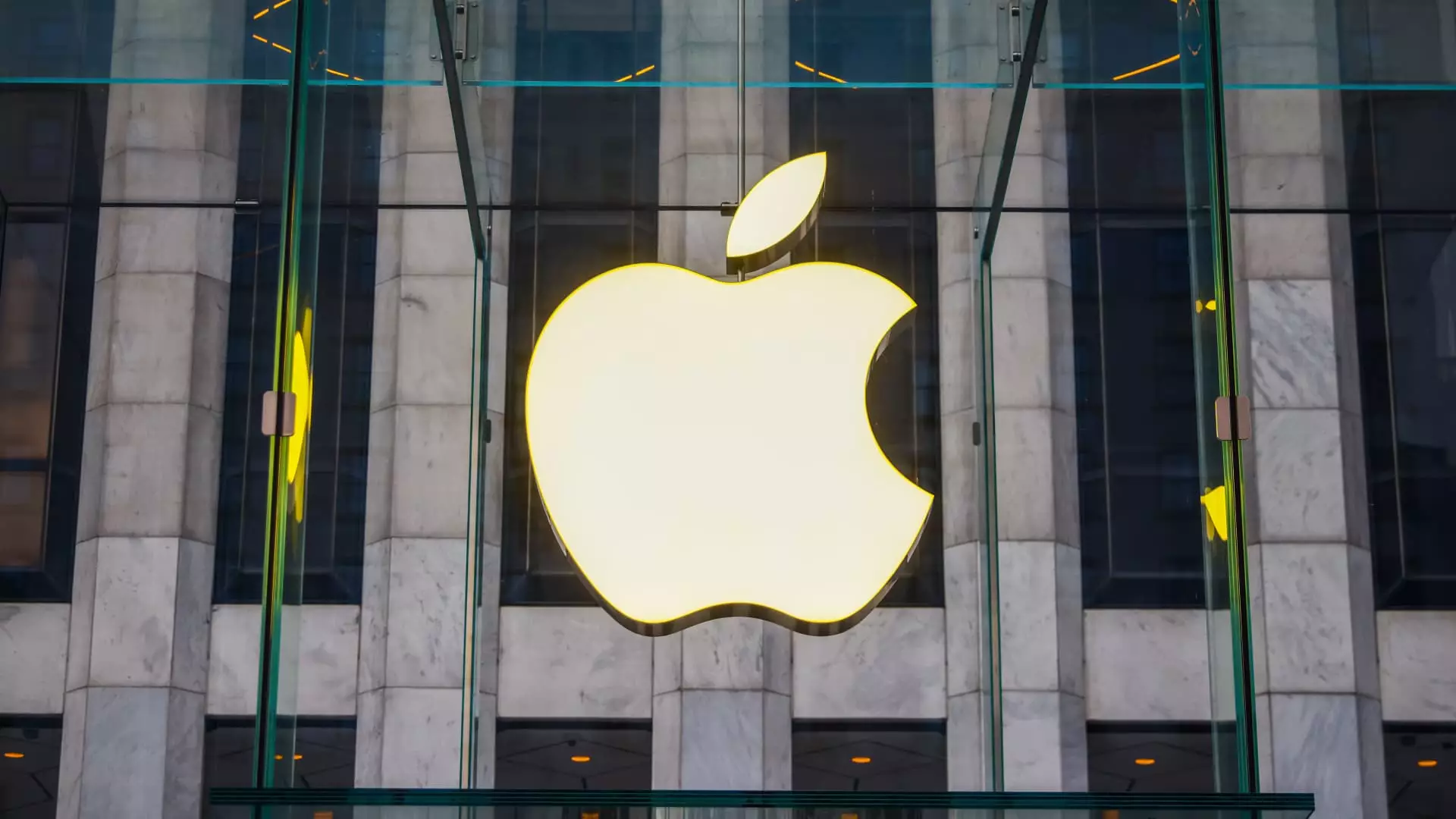In the ever-evolving world of stock investments, every move made by high-profile investors is scrutinized to decipher underlying trends and motivations. One such significant development occurred when Berkshire Hathaway, led by investment mogul Warren Buffett, revealed that it had offloaded approximately 25% of its stake in Apple during the third quarter. As of the end of September, Berkshire still retained a staggering $69.9 billion in Apple shares, firmly establishing the tech giant as its largest holding. This sell-down raises questions about the future trajectory of both Apple and Berkshire’s investment strategy.
The nuanced implications of this decision reflect broader market sentiments and investor behavior. Berkshire’s actions come amid a backdrop of increasing volatility in the stock market, epitomized by fluctuating share prices and changing analyst ratings. Despite the nerves in the market triggered by these sell-offs, investor confidence appears somewhat resilient, with many bullish on Apple’s long-term potential.
Following the news of Berkshire’s share reduction, Apple’s stock price experienced a slight dip of around 1%, triggered by market anxieties—the first opportunity for Wall Street to react to the revelation. It is noteworthy that Apple shares have been on a three-day losing streak prior, giving rise to increased speculation among traders. The stock, trading at approximately $223, reflected a 5.5% decline from its record high of over $236 reached just a week prior to the earnings announcement.
The mixed reactions from Wall Street speak volumes about the perception of Apple’s stock in light of this latest Berkshire report. On one hand, some analysts have revised their price targets downwards. For instance, Loop Capital has adjusted its target from $300 to $275. On the other hand, some analysts from Morgan Stanley highlighted that Apple has achieved its best operating margins in a decade, a significant indicator of financial health. This duality illustrates a complex landscape for investors where optimism and caution coexist.
The question of “why” Berkshire Hathaway is selling a portion of its Apple stake rings prominently in investors’ minds. Some speculate that Buffett may be cashing in on profits after a notable rally in Apple’s stock. However, it is critical to recognize that this decision may not signal a lack of confidence in Apple’s long-term performance but rather an exercise in prudent financial management. As Berkshire’s cash reserves exceed $300 billion, the sell-off can be seen as a means to reallocate capital towards other potential ventures or to maintain liquidity for future investments.
In addition, the dialogue surrounding Apple in the media often tends to amplify investor reactions, sometimes at the expense of clear analysis. The advice from analysts like Jim Cramer serves as a reminder that short-term fluctuations should not eclipse a well-considered long-term investment strategy. His mantra, “own it, don’t trade it,” resonates profoundly with those who prioritize stability over volatility. This perspective encourages investors to focus on the inherent value of their assets rather than succumbing to market noise.
While the immediate impact of Berkshire Hathaway’s actions on Apple’s stock has spurred discussions, it is essential to place this in a larger context. Apple has consistently demonstrated resilience, backed by impressive quarterly financial reports that exceeded market expectations. The company continues to report growth in crucial domains, including substantial increases in App Store revenues and downloads, showcasing its ability to adapt and thrive in a competitive marketplace.
As the tech landscape evolves, investors must remain attentive to overarching trends that influence not just Apple, but the entire sector. Factors like consumer behavior, technological advancements, and global economic conditions will inevitably paint the bigger picture moving forward. While Berkshire’s decision to trim its Apple holdings may generate headlines, it serves as a reminder of the multifaceted nature of investment strategies and the importance of viewing market dynamics through a prudent, long-term lens.
As we navigate this intricate web of investment narratives, a balanced approach remains crucial. By analyzing key developments and acknowledging both risks and opportunities, investors can make informed decisions that will serve their financial goals in the years to come.

